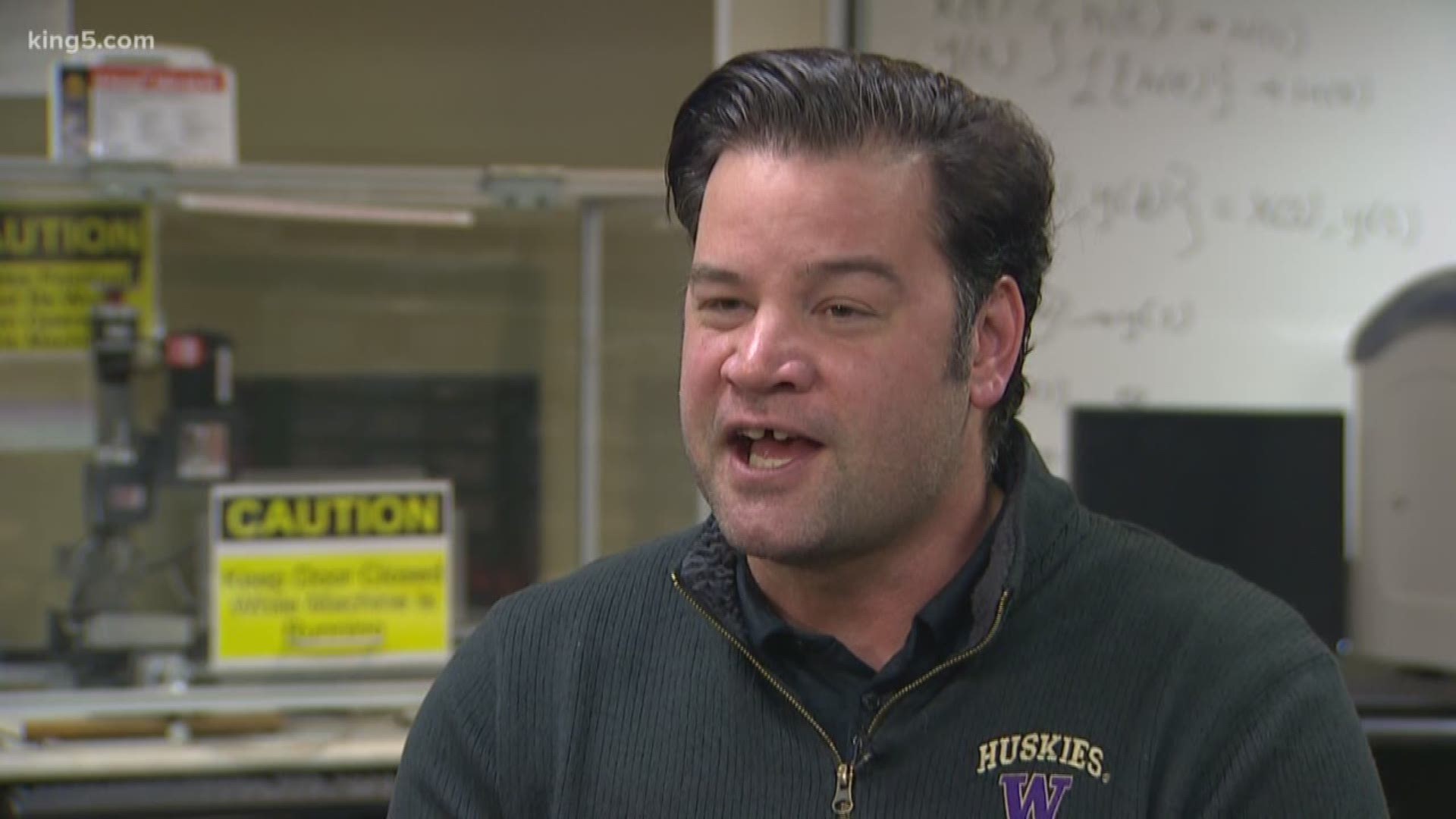TACOMA, Wash. — When firefighters take on a fire at a large building or warehouse, there are concerns about 'mayday scenarios,' where a firefighter becomes trapped or disoriented and needs to be rescued.
A University of Washington professor and his students are now developing technology that could help keep firefighters safer in those types of scenarios.
Professor Matthew Tolentino has a background in hardware and software design and development with Intel. Five years ago, he started teaching full-time at UW and started researching how sensors in buildings might be able to help first responders.
He told Tacoma's Fire Chief about the work and asked him what dangers in the city concern him the most.
"I said 'what keeps you up at night?" The answer had Dr. Tolentino looking at an issue he had never thought about before.
"The chief said, 'this is what keeps me up at night, I worry about firefighters dying when we're responding to structural fires,'" said Dr. Tolentino.
Those mayday scenarios the chief was referring to have led to deaths in the fire service for years.
"As soon as the firefighters cross the threshold back into the building, they're back to operating in the 1800s," Tolentino explained. That's because things like GPS, Wi-Fi and Bluetooth don't work.
"I took it on myself and then I started recruiting students to help me start building these devices and testing them and I failed completely for the first year," said Dr. Tolentino.
But he finally found the answer in radio waves. The technology they're developing is called Firefly.
"We tried all the commodity radio transceivers and finally arrived at a specific technology called ultra-wideband," said Dr. Tolentino.
The technology works like a video-game interface, so an Incident Commander can track the whereabouts of firefighters as they move around the fire.
Firefly has been tested several times with the Tacoma Fire Department and was presented at a national firefighting conference.
“I gave the talk and one of the guys that came up afterward and stopped me and said I appreciate you doing this you're going to save lives," Dr. Tolentino explained.
Alex Boyle is one of the students that helped Dr. Tolentino put it together. He's now a paid research assistant with grant money and said working on this project has changed how he sees his future.
“Working on something like this is kind of a dream in the back of my mind, working for one or two people making my own decisions about the design of the project,” Boyle explained.
The next step is taking Firefly from the testing phase to using it with real working firefighters.
The Tacoma Fire Department plans to use it at two fire stations in the next few months.

